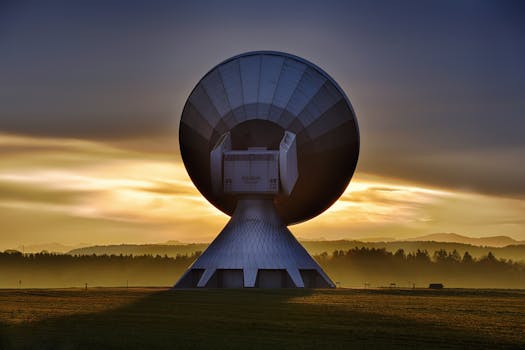From Ground to Sky: The Evolution of Satellite Telecommunications Technology

Satellite Telecommunications has undergone significant transformations since its inception. The evolution of satellite telecommunications technology has transformed the way we communicate and access information. From its humble beginnings to the current state-of-the-art systems, satellite telecommunications have come a long way.
The first satellite, Sputnik 1, was launched in 1957, marking the beginning of the space age. However, it wasn’t until the 1960s that the first commercial telecommunications satellites were launched. The Intelsat 1, also known as the Early Bird, was the first commercial communications satellite, launched in 1965. It provided transatlantic telecommunications services, revolutionizing global communication.
Over the years, satellite telecommunications technology has continued to evolve, with advancements in materials, design, and launch technologies. The introduction of geostationary satellites in the 1970s enabled satellites to remain stationary in the sky, providing continuous coverage to a specific region. This led to the development of direct-to-home (DTH) television, which allowed people to receive television signals directly from satellites.
The 1980s saw the introduction of mobile satellite systems, which enabled communication on-the-go. The first mobile satellite phone call was made in 1986, marking a significant milestone in the evolution of satellite telecommunications. The 1990s saw the introduction of broadband satellite internet, which provided high-speed internet access to remote and underserved areas.
Today, satellite telecommunications play a vital role in modern communication systems. With the advent of low-earth orbit (LEO) satellites, satellite constellations, and high-throughput satellites (HTS), the industry is experiencing a new wave of innovation. These advancements have enabled the provision of high-speed, low-latency internet services, making it possible to connect even the most remote communities.
In addition to providing internet access, satellite telecommunications are also used for navigation, weather forecasting, and remote sensing. The Global Positioning System (GPS) is a network of satellites that provide location information to GPS receivers on the ground. Weather satellites, such as geostationary operational environmental satellites (GOES), monitor the weather and provide critical data for forecasting.
Remote sensing satellites, such as the Landsat series, provide valuable data on the Earth’s surface, enabling applications such as crop monitoring, disaster response, and environmental monitoring. The use of satellite telecommunications in these areas has significantly improved our understanding of the world and has enabled us to make more informed decisions.
The future of satellite telecommunications is exciting, with many new developments on the horizon. The launch of new satellite constellations, such as OneWeb and Starlink, is expected to provide global internet coverage, bridging the digital divide and enabling connectivity for all. The use of advanced technologies, such as artificial intelligence and the Internet of Things (IoT), is also expected to play a significant role in the future of satellite telecommunications.
In conclusion, the evolution of satellite telecommunications technology has been remarkable, transforming the way we communicate and access information. From its humble beginnings to the current state-of-the-art systems, satellite telecommunications have come a long way. As technology continues to advance, we can expect even more innovative solutions to emerge, further transforming the satellite telecommunications landscape.
Satellite telecommunications have also had a significant impact on various industries, including aviation, maritime, and healthcare. The use of satellite communications in these industries has improved safety, efficiency, and productivity. For instance, satellite communications are used in aviation for navigation, communication, and weather forecasting, while in maritime, they are used for navigation, communication, and emergency response.
In healthcare, satellite telecommunications are used for telemedicine, enabling remote consultations and medical services. The use of satellite communications in these industries has significantly improved outcomes and has enabled the provision of critical services to remote and underserved areas.
The impact of satellite telecommunications on the environment has also been significant. The use of satellite remote sensing has enabled the monitoring of the environment, providing critical data on climate change, deforestation, and ocean health. The use of satellite communications has also enabled the development of sustainable agriculture practices, such as precision farming, which reduces waste and improves crop yields.
In conclusion, the evolution of satellite telecommunications technology has had a profound impact on modern society. From its humble beginnings to the current state-of-the-art systems, satellite telecommunications have transformed the way we communicate, access information, and interact with the world around us. As technology continues to advance, we can expect even more innovative solutions to emerge, further transforming the satellite telecommunications landscape.




